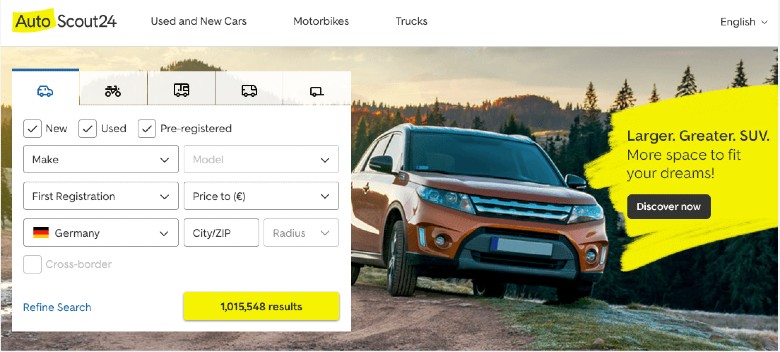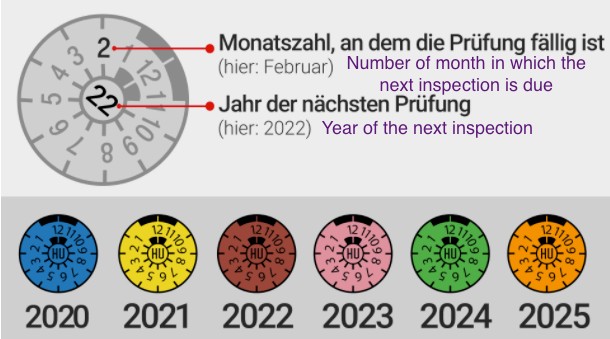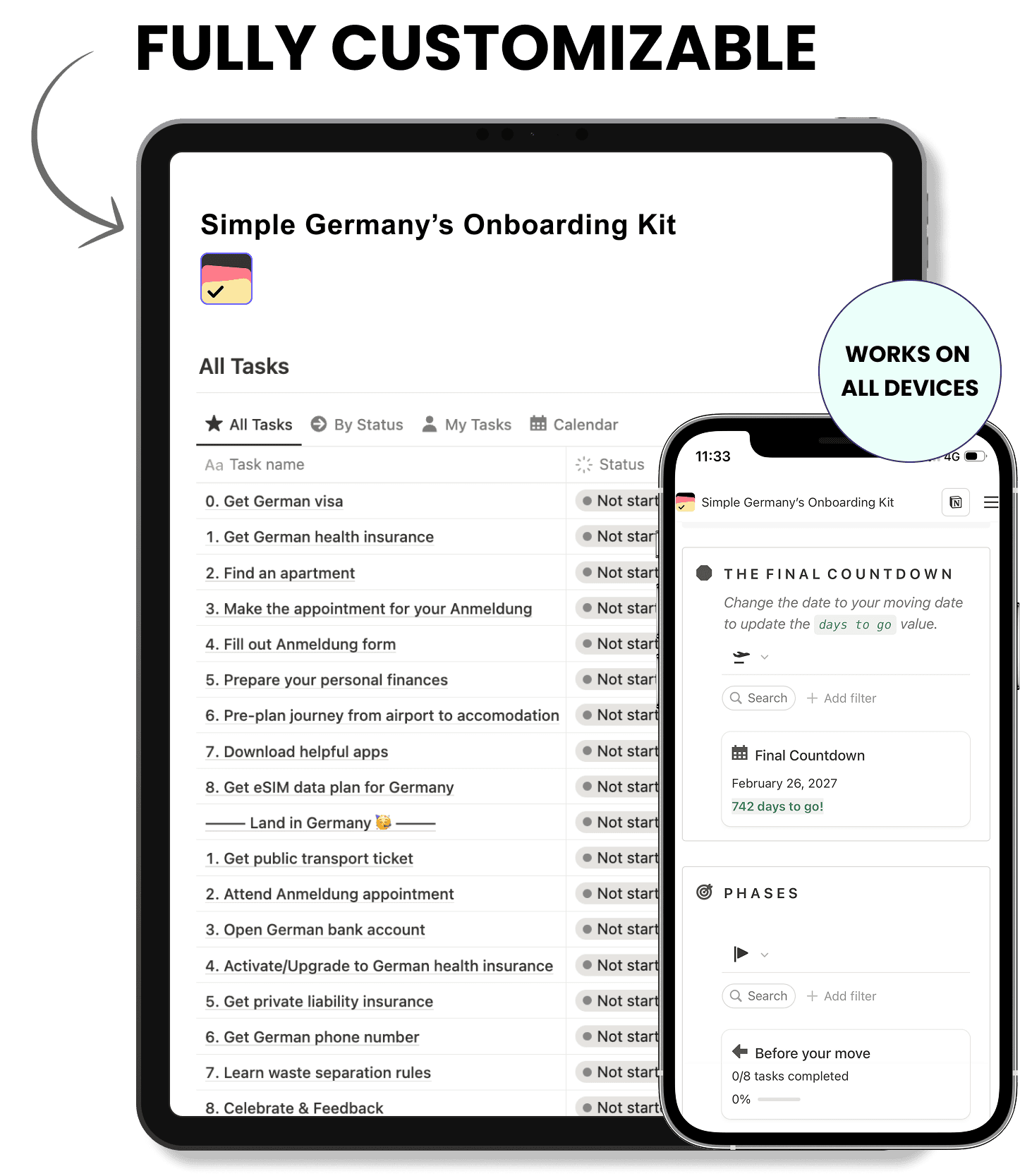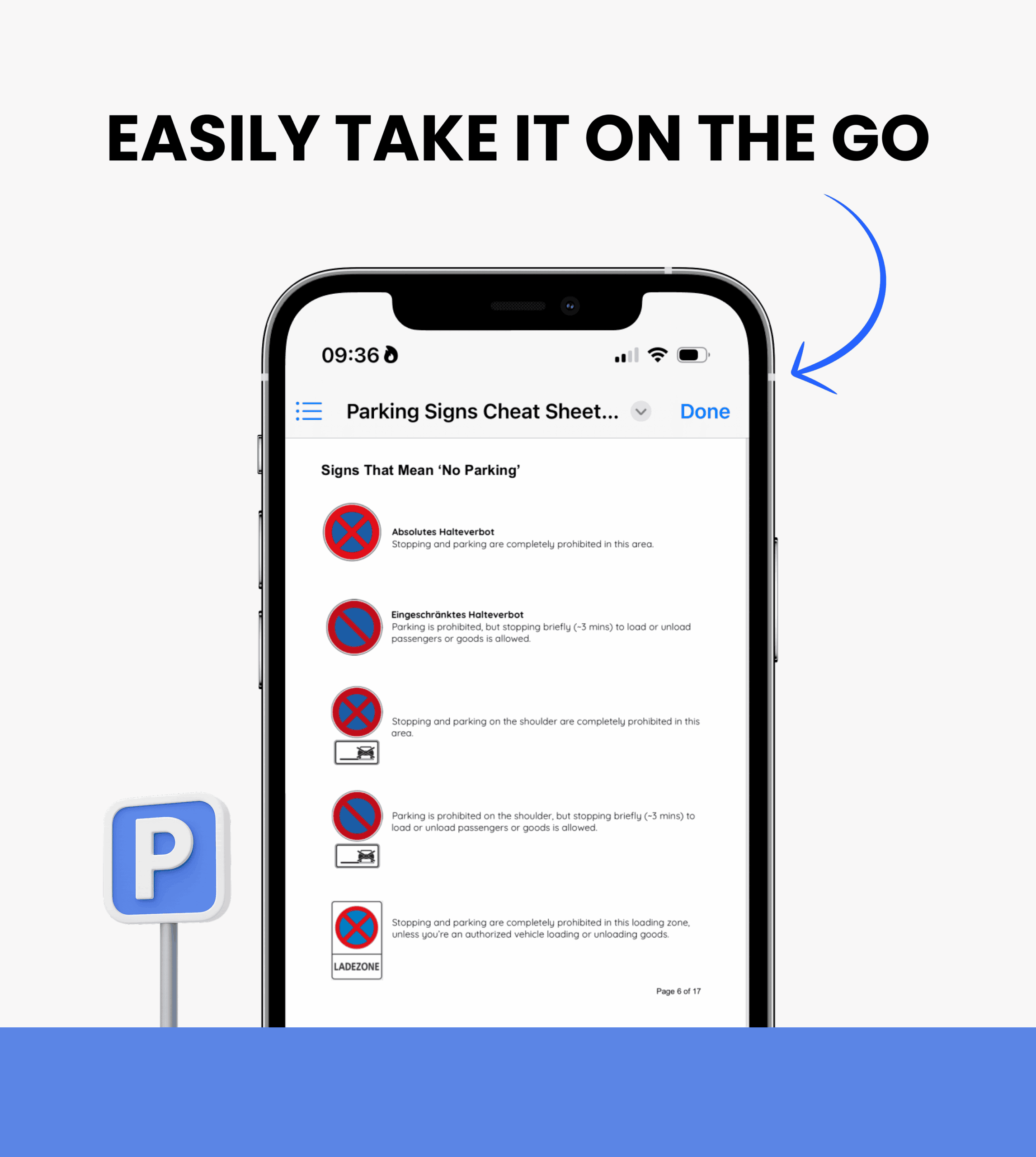You have decided to buy a car in your new home country. Congratulations! It can be exhilarating and daunting at the same time. We bought our first car in November 2020 and will guide you through the steps of buying a car in Germany, what to pay attention to, and how much it costs.
Can a foreigner buy a car in Germany?
Yes, of course, as long as you are a registered resident in Germany. Be aware that you will only be able to drive a car in Germany if your foreign license is valid in Germany. Check out our detailed guide below on whether or not you need to get a German driving license.
Read Our Related Guide
🛫 Moving to Germany soon? Stay organized with our Onboarding Kit — a prebuilt task manager and your step-by-step guide to ensure you don’t miss a thing during your move!
- Get a Prebuilt Task Manager for Your Move to Germany: Know what your next step should be.
- Save Time & Stay Organized: Don’t spend hours Googling → Get all the essential resources, critical steps, and links to governmental sites in one place.
- Fully Customizable: Adjust, add, or personalize the template to match your unique situation.
Types of cars to buy in Germany
Neuwagen (new car)
If you fancy a brand new car, you will have to choose a car dealer to discuss all the details and configuration.
Gebrauchtwagen (used car)
Used cars are quite popular in Germany, as the depreciation of new vehicles, especially in the first years, is so high. You can either buy it from a dealer (Gebrauchtwagenhändler) or a private person.
Jahreswagen (a car that has been used for a maximum of one year)
A Jahreswagen is a mixture of a new and used car, as it is a maximum of one-year-old, hence the name. The advantage is that it is still in fantastic shape, mainly only used by the car dealership employees, and you don’t have to take on the high depreciation that takes place in the first year after a car is registered. Jahreswagen are only sold by brand dealerships.
Learn to decode German parking signs in just 15 minutes!
- Understand German parking signs at a glance with this pocket guide (.pdf): all the parking signs with a clean explanation of what they mean in English.
- Avoid costly fines with real-life photo examples: we break down confusing signs just like the ones you’ll see on the street.
- Master tricky parking lingo with our built-in glossary: we explain all the essential German terms in a simple way, so you know exactly what every word on a sign means.
How to buy a car in Germany
Here are 9 detailed steps that take you from wanting a car to owning a car in Germany.
1. Find the car you want
Everything, of course, starts with finding the car of your liking. The best pages for your research and finding car dealerships in Germany are mobile.de and autoscout24.de. Both pages offer their services in English, and you have the option to search for new and used cars. Once you set up a profile, you can enter all the details you would like your new ride to have. Whether you need a family car with more than five seats or a four-wheel drive, you can set a filter for every detail.

You can also save your searches and your favorite vehicles and set up an alert in case new cars matching your search get added. Both websites also have an iOS and Android app.
Specs To Look Out For In A Used Car
- Mileage (Kilometerstand) – 100.000 km is usually an important benchmark
- First registration (Erstzulassung – EZ) – the date indicates the age of the car
- Number of previous owners (Vorbesitzer) – one is, of course, better than two or three
- Fuel type (Kraftstoffart) – Petrol (Benzin) or Diesel
- Engine power (Leistung) – PS in German is short for horsepower
- The date for the next periodic technical inspection (Hauptuntersuchung – HU) – you should look for cars with at least one year until the next HU or ideally a new HU upon purchase
- Accident-free car (Unfallfrei) – search for vehicles that have not been in accidents
- Gearing mechanism (Getriebe) – most cars in Germany have manual gearing (Schaltgetriebe), so be aware of that in case you only learned to drive automatic (Automatik)
- Maintenance record (Checkheft gepflegt) – only look for cars that provide a full maintenance record, as without one, something is fishy
- Air Conditioning (Klimaanlage) – be aware that not all car manufacturers and used cars have AC installed
- Emission sticker (Umweltplakete) – most German cities are an environmental zone, meaning that only cars with green emission stickers (Euro 4) are allowed to enter. So be sure to look for a car with a green emission sticker.

2. Visit the car dealership
Once you have found the car you want, call the car dealer or private seller to double-check that it is still available and make an appointment for a visit. Every good car dealership will let you test drive the car and inspect it to your liking. If you are looking at a used car and you have no clue about cars, you might want to consider taking a friend with you who has some knowledge.
Here are some tips from the biggest German automobile club, ADAC, what to look out for, and what to do when looking at a used car. The article is in German, so be sure to use Chrome and Google’s translate the page function. Price negotiations at German car dealers are nothing like in, let’s say, the US. The price indicated online is the price you will pay.
3. Buy the car
Once you have decided to buy the car, you will sign a binding order with the car dealer and make a down payment. You will not be able to just drive your new car off the lot, though. Before you can do that, you need to insure and register the car. Some dealers offer to take care of the registration for you, either for free or for a fee.
This is also the time to discuss payment options and their interest rates. If you require a loan to buy a car, take a look at our guide below to learn about the best way to get a loan in Germany.
Read Our Related Guide
Used Car Dealership Warranty
When buying a used car in Germany from a car dealer, you will receive an included one-year warranty from the dealer by law (if the dealer is trying to exclude it from the contract, walk away, as something is fishy). The warranty means that the dealer needs to cover the costs to repair a defect that appears in the first months after purchase if the defect’s origin already existed before the purchase.
Used Car Dealership Guarantee
Your car dealer might offer you a one to three-year guarantee on top of the warranty for an additional fee. This guarantee also covers defects, which originally did not already exist before the purchase. The guarantee can have different ranges, from purely technical to also electrical cover. It is common that the guarantee covers 100% of the labor cost and between 30% and 100% of the material cost, depending on the mileage at the time of the defect.
4. Get the TÜV inspection
All vehicles in Germany must pass a general inspection every two years. The official term in German is HU (Hauptuntersuchung). The unofficial word is TÜV inspection. TÜV is just the most popular institution that does this general inspection on vehicles, hence the term’s popularity.
If your vehicle has passed a general inspection successfully, you will get a valid sticker that you can put on the rear license plate.
Workshops certified by TÜV, Dekra, KÜS, or GTÜ can perform this inspection, which costs between 70 to 150 euros.
If the car dealer sold you the vehicle with a new general inspection included, it is the dealer’s responsibility to take it to the inspection.
Once the general inspection is completed and the dealer receives your down payment, they will send you the car registration papers (Zulassungsbescheinigung I and Zulassungsbescheinigung II) together with the TÜV certificate via postal mail.
After receiving the car registration papers, you can wire the rest of the money to the car dealer if you have agreed on direct payment.
5. Book an appointment to register the car
After buying the car, you should make an appointment online at your vehicle registration office (Kfz-Zulassungsstelle). You can only register a vehicle in the city that you are registered in. Plan some buffer time to receive the documents listed above via postal mail. We have written an in-depth guide on the steps to take for registering your vehicle.
Read Our Related Guide
6. Buy car insurance
To register the car, you need the so-called eVB number (elektronische Versicherungsbestätigung), which you will receive online after buying car insurance via a comparison tool such as Tarifcheck.
There are three different types of car insurance in Germany:
- Car Liability (Kfz-Haftpflichtversicherung)
- Partial Cover (Teilkasko)
- Comprehensive Cover (Vollkasko)
We have also written an in-depth guide on how to get car insurance and what to look out for when choosing your insurance company.
Read Our Related Guide
7. Buy your license plates
You can save time and money by reserving and buying your new license plates online. You have the option to pick a license plate combination of your liking, if available. For the first letter(s) you have to enter the acronym indicating the city in which you and the vehicle are registered. If you prefer not to get your license plates online, there are plenty of license plate manufacturers in and around the registration office.
8. Register the car
Take all your documents and your license plates to the registration office at the time of your appointment and buy the Umweltplakete directly from the clerk, as it is a lot cheaper than online. The clerk will print a new vehicle registration – the Fahrzeugschein (a.k.a. Zulassungsbescheinigung I) and add your name to the vehicle title – the Fahrzeugbrief (a.k.a. Zulassungsbescheinigung II). They will also put the sticker of your city and the HU/TÜV sticker on the license plates.

We have written an extensive guide on all the steps to follow for registering your vehicle in Germany.
9. Pick the car up
Now it is time to pick up your new ride. Ideally, you inform your car dealer about your new license plate number, so they can prepare all documents. Upon picking up your vehicle, you will get the complete paperwork from the dealer, such as the purchase contract (Kaufvertrag), the maintenance record, the guarantee contract if you purchased it as an extra, the final invoice, and the vehicle manual.
Timeline from car purchase to car pickup in Germany
How soon you can actually drive your car from the moment you sign the purchase order depends on whether or not the vehicle has a valid HU/TÜV and how fast you can get an appointment at the registration office. It took us one week from purchase to the pickup of our car – here is the timeline:
| Weekday | Action taken to buy a car in Germany |
|---|---|
| Tuesday | - went to the car dealer, inspected, test drove, and bought the car - booked registration appointment at the Kfz-Zulassungsstelle in Dusseldorf for the following Tuesday |
| Wednesday | - wired down-payment |
| Thursday | - car dealer got the TÜV inspection done and afterward sent the car registration papers and TÜV certificate via postal mail - reserved and ordered license plates online |
| Friday | - car registration papers arrived via postal mail - license plates were printed and sent via DHL - bought car insurance via Tarifcheck - signed up with ADAC automobile club (see below) |
| Saturday | - license plates arrived via DHL |
| Tuesday | - went to the registration office with all our documents and got our car registered - went to the car dealer and picked the car up |
Can you buy a car in Germany online?
Yes, you can! If the process described above sounds too complicated and too much of a hassle to you, buying a car online is another option. In fact, it is a much more comfortable one.
In the past year, online platforms like Instamotion, have entered the used car market. YOu can look for the car you want on their website and order it online. The car will be delivered to you already registered and ready to drive. They offer used cars that are a maximum of five years old with a maximum of 100.000 km driven. The cars undergo a quality check and have a minimum of one year of TÜV and warranty.
If you are not satisfied with the car, you can return it within 14 days with a 100% money-back guarantee.
The only caveat is that everything is in German. The website you can easily translate by using Chrome as a browser and selecting ‘Translate to English’ after a right-click; however, the paperwork will still be in German.
- Premium used cars
- Registration included
- Delivery to your home
- 14 day money-back guarantee
How much does it cost to buy a car in Germany?
Next to the car’s actual cost, you should consider spending around 1.000 euros extra for things like registering the vehicle, getting car insurance, paying vehicle tax, and joining an automobile club. Below we break down each cost of buying a car in Germany individually.
Car prices in Germany
The average price of a new car in Germany is around 36.300 euros, while the average price of a used car in Germany is around 18.750 euros. But, of course, these numbers vary highly, depending on the car’s make, model, and configuration.
Car taxes in Germany
Every vehicle owner needs to pay car taxes in Germany. The amount of taxes, of course, depends on the make, model, and engine. The average car tax for new cars is around 200 euros per year. Take a look at this car tax calculator in English to find out how much vehicle tax you will have to pay. Remember that while registering your vehicle, you will have to give your bank details to the registration office so that the federal customs authorities can pull the taxes directly from your bank account.
Cost of car insurance in Germany
After a vehicle’s purchase price, car insurance is undoubtedly one of the more costly owner’s expenses. For liability car insurance, the average cost is 258 euros per year. Suppose you want to add a partial cover (Teilkasko) to it. In that case, you pay, on average, 89 euros, and if you wish to have the full comprehensive cover (Vollkasko), you must add, on average, 329 euros to the liability cover. Therefore fully comprehensive car insurance costs 587 euros on average per year.
Cost of car registration in Germany
To register your recently purchased car, you will need to pay for license plates, the emission sticker, the registration fee, and potentially the TÜV inspection. Prices vary slightly between cities and providers. For example, our TÜV inspection cost 115 euros, which our car dealer covered, and we paid 86 euros for the registration and license plates.
Cost of becoming a member at an automobile club
When you become a car owner in Germany, you might want to consider joining an automobile club, such as the ADAC. The number one reason is to get a breakdown cover (Schutzbrief) for Germany, Europe, or even worldwide. Membership for one person starts at 54 euros per year.
Learn to decode German parking signs in just 15 minutes!
- Understand German parking signs at a glance with this pocket guide (.pdf): all the parking signs with a clean explanation of what they mean in English.
- Avoid costly fines with real-life photo examples: we break down confusing signs just like the ones you’ll see on the street.
- Master tricky parking lingo with our built-in glossary: we explain all the essential German terms in a simple way, so you know exactly what every word on a sign means.
Conclusion
You have made it! By following all the steps in this guide, you will own one of the 48,25 million cars registered in Germany and be able to drive the German Autobahn whenever you want.
Simple Germany’s Hot Tip
We highly recommend you participate in driving safety training (Fahrsicherheitstraining), to get to know the driving characteristics of your new ride and freshen up your skills in handling stressful driving situations.
The ADAC has 60 different locations in Germany, where they offer different types of driving safety training. They are a lot of fun and really improve your car handling skills.
Happy and safe driving! 🚘








